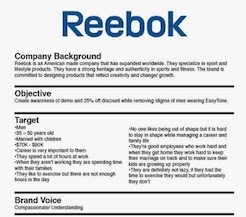Working with Agencies – The Creative Brief
If you don’t want your agency or marketing director to develop a communication strategy that’s totally disconnected from your actual competitive strategy, you need a creative brief. I don’t see it as a luxury at all. It has the same value for a small startup, as it does for big companies who invented the practice to better manage their external Don Drapers (this character was NOT an exaggeration FYI).
I work with founders who are literally winging their conversations with agencies or, even worse, just letting them make up the entire strategy off in a corner. And believe me, agencies love to do that because it’s the fun part of the job. And the most profitable when they break it out as a line item.
But will an agency’s mellifluously composed communication strategy written off in a corner under dark lights and under perhaps the influence of gentle puffs of reefer actually accomplish what you need competitively for your business?
Who the hell is your agency to claim they know your competition better than you? If they actually do, perhaps from 1-2 clients years ago, then you should be embarrassed. It makes no sense. There’s no way they know your competition and your business’s strategic needs better than you do. So don’t let them go off and develop your communication strategy in a corner by themselves because they will. Please, please don’t do this.
So, what is a creative brief?
- Year-over-year revenue target – The year-over-year revenant target is a way of communicating internally to your marketing staff or externally to an agency how aggressively you are trying to grow. In other words, what is the kind of growth machine that the communications work is feeding into? Is it linear, modest, or is it exponential or is it unicorn-esque crazy?
- Competitive strategy – This has two components; a) how you plan to source volume from other businesses to your P&L and b) the key outcomes you want your innovation to be known for. The latter is going to drive the communications work. The former is your theory, essentially, of how you’re competitively going to get other people’s money that’s currently going to other businesses.
- A behavioral profile of your ideal consumer audience – This is the community/tribe/network who you hope (or know through research) will buy from you repeatedly for specific outcomes you designed your product line to achieve. The goal is not to create a persona. The goal is to create a social profile of the kinds of people who could become your ideal repeat purchaser.
- A communications objective – What role is marketing and communications going to play to pursue your competitive strategy? Examples that make sense to set for a small company with respect to a communications objective include things like convincing buyers of category X to try your thing in category Z, pound away on your key outcomes and associating them with your trademark through high impression advertising, or saturating local geography with trademark impressions prior to an in-person event store promo, et cetera. They should be that specific.
A creative brief is a document that keeps everybody on the same page. It keeps everybody accountable and that’s critical if you’re deploying a mix of in-house talent and external agencies. With the creative brief in hand, your marketing staff and/or agencies working with you should be able to handle the creation of a good professional communication strategy.
